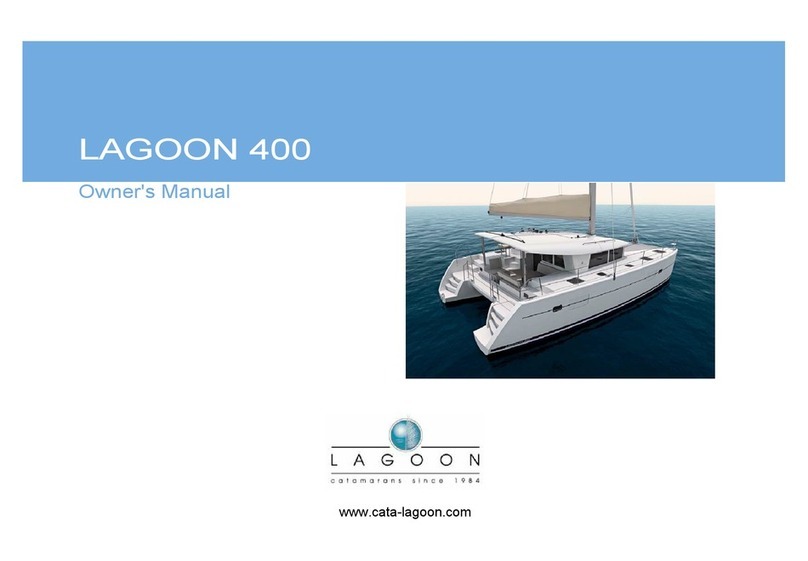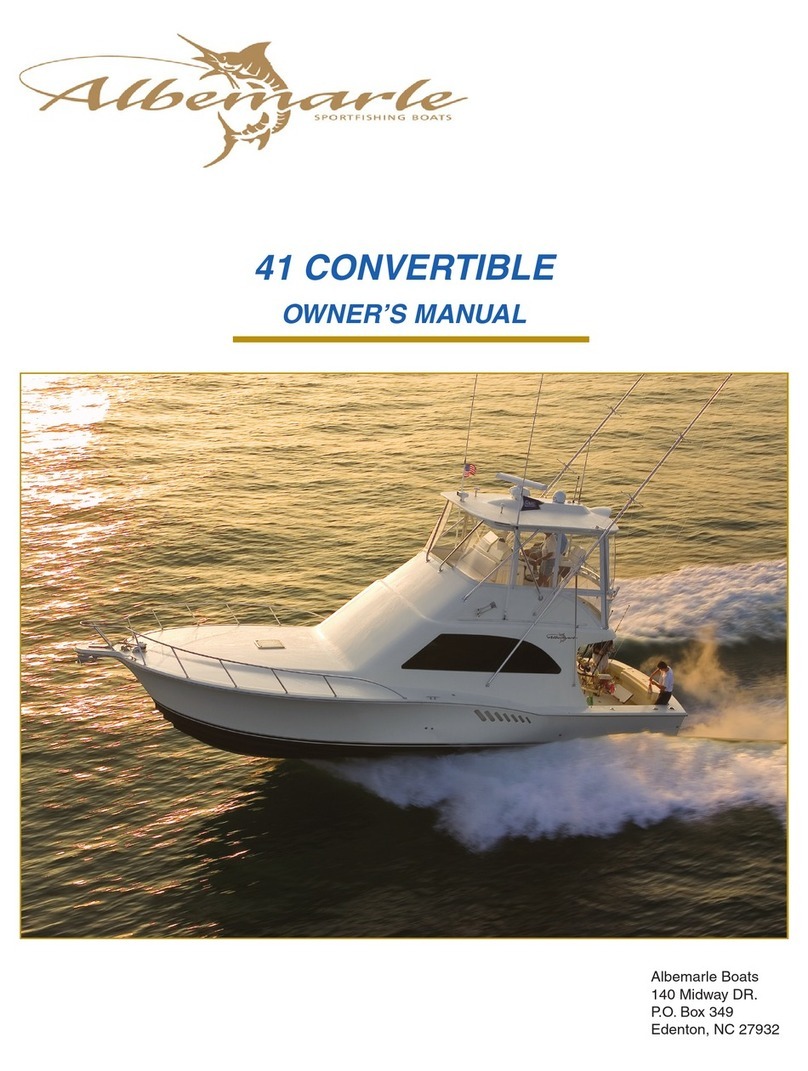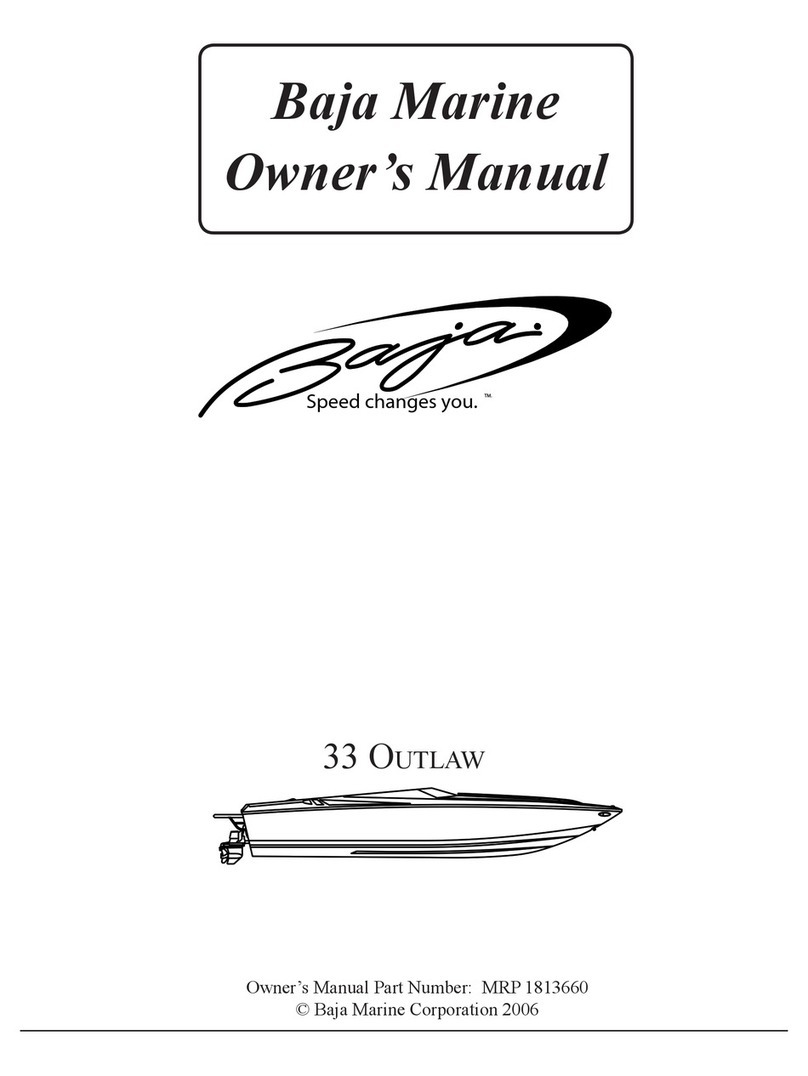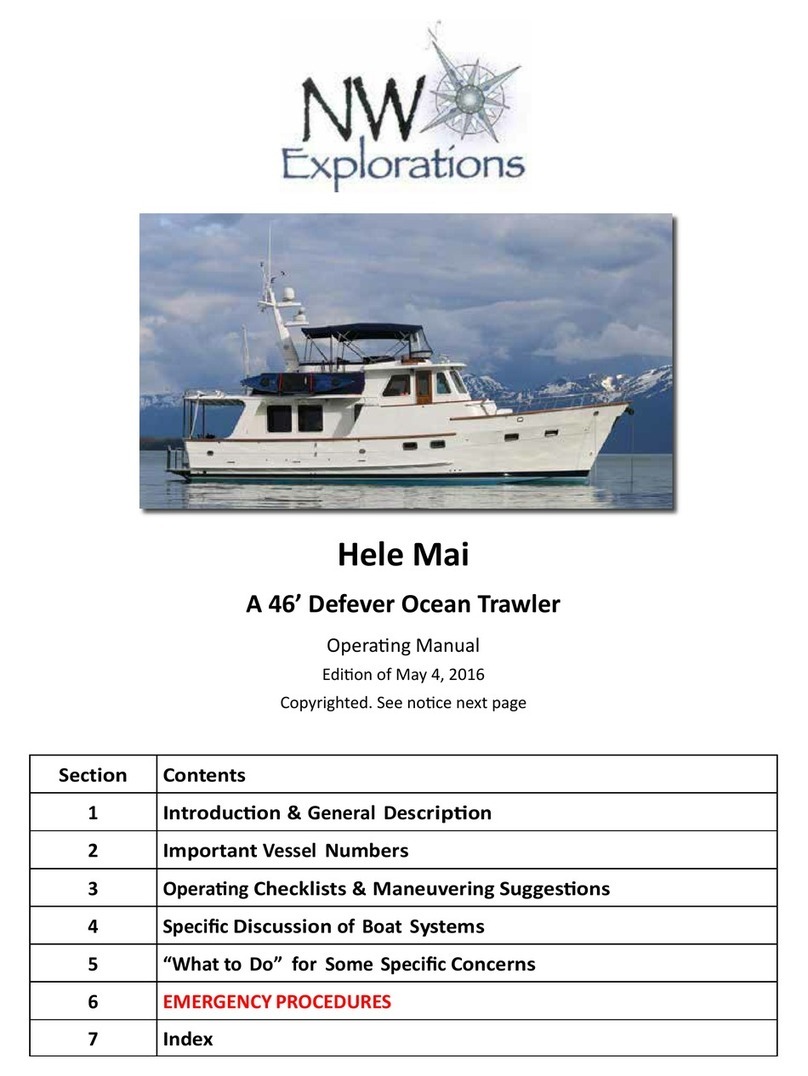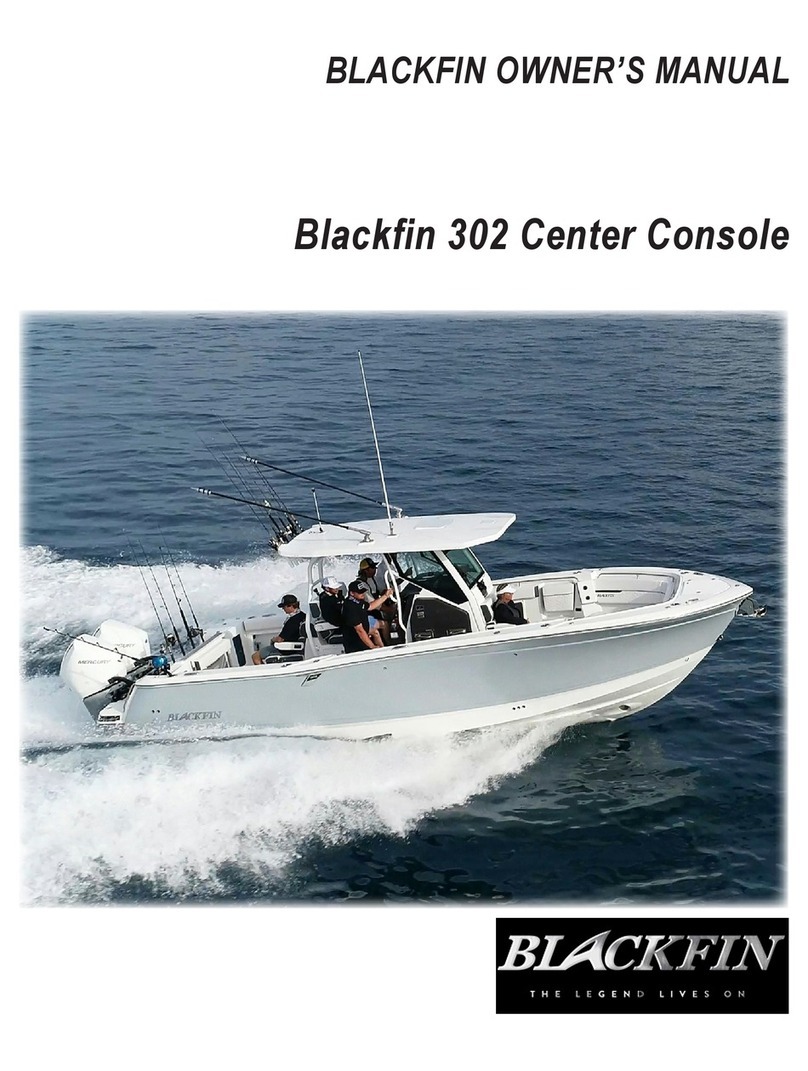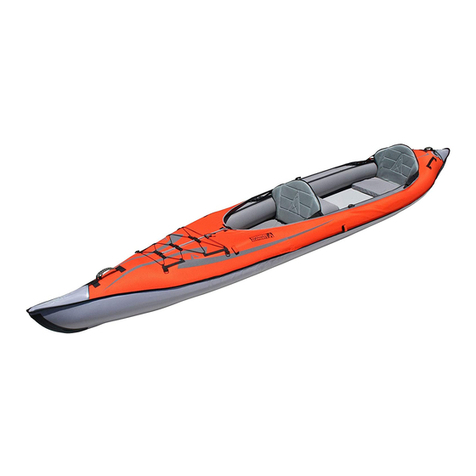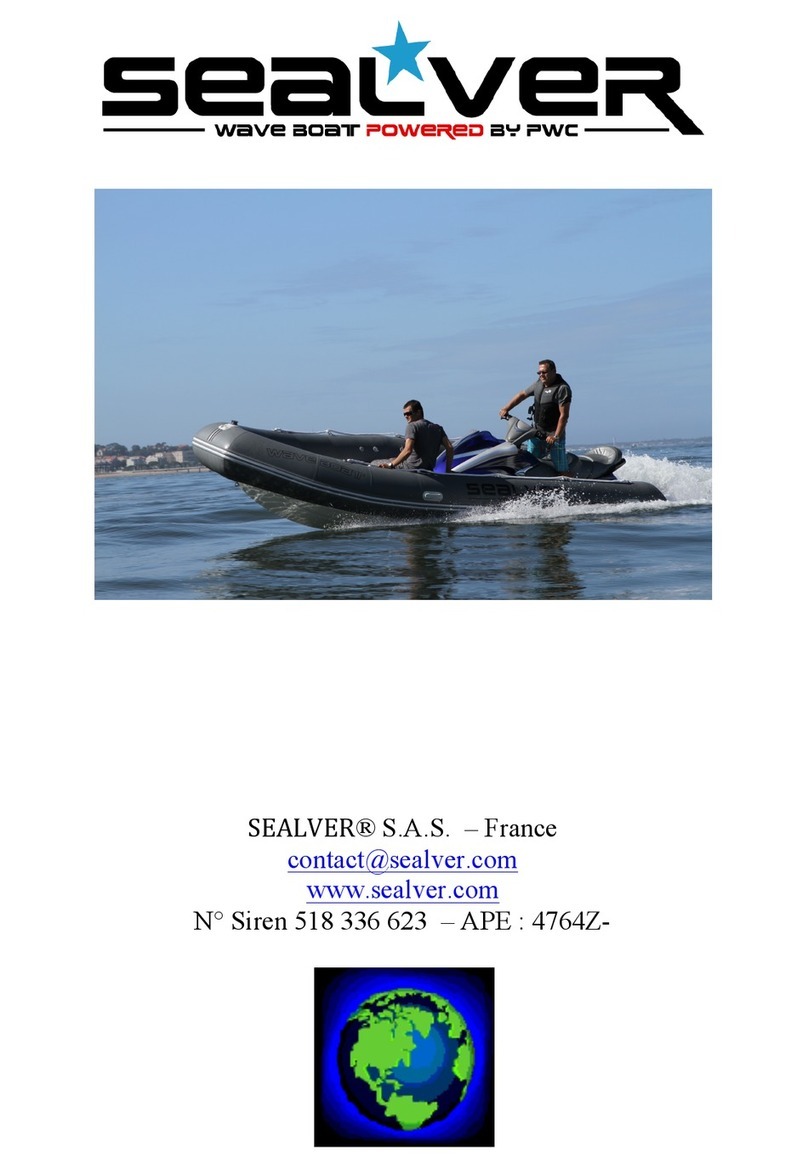LDC Racing Saliboats RS700 User manual

1
OWNER’S MANUAL
LDC Racing Sailboats, Trafalgar Close, Chandlers Ford. Eastleigh SO53
4BW, England
Tel. +44 (0)23 8027 4500 Fax. +44 (0)23 8027 4800

2
CONTENTS
1. INTRODUCTION
2. SPECIFICATIONS AND DRAWINGS
3. SAFETY INFORMATION
3.1 Design Category
3.2 Loading
3.3 Safety Equipment
3.4 Capsize Recovery
3.5 Air Tank
3.6 Man Overboard Prevention and Recovery
3.7 Use of an Outboard Engine
3.8 Towing, Anchoring, Mooring and Trailing
4. COMMISSIONING
4.1 Preparation
4.2 Wing Width
4.3 Mast
4.4 Boom and Vang
4.5 Hoisting Sails
4.6 Completion
5. SAILING HINTS
5.1 Introduction
5.2 Trapezing
5.3 Tacking
5.4 Gybing
5.5 Hoisting the Spinnaker
5.6 Dropping the Spinnaker
5.7 Very Light Winds
6. TUNING GUIDE
6.1 Rig Tension
6.2 Cunningham
6.3 Vang
6.4 Outhaul
6.5 Foils

3
7. MAINTENANCE
7.1 Boat Care
7.2 Foil Care
7.3 Spar Care
7.4 Sail Care
8. WARRANTY

4
1. INTRODUCTION
Congratulations on the purchase of your new RS 700 and thank you for
choosing an RS product. We are confident that you will have many hours of
great sailing and racing in this truly excellent design.
The RS700 is an exciting boat to sail and offers fantastic performance. It is a
lightweight-racing dinghy and should be treated with care. This manual has
been compiled to help you operate your RS 700 with safety and pleasure. It
contains details of the craft; the equipment supplied or fitted, its systems and
information on its safe operation and maintenance. Please read it carefully
and be sure that you understand its contents before using your RS 700.
If this is your first craft, or you are changing to a type of craft you are not
familiar with, for your own safety and comfort, please ensure that you have
adequate experience before assuming command of the craft. If you are
unsure, your dealer or national sailing federation will be able to advise you of
a local sailing school, or competent instructor.
Please keep this manual in a secure place and hand it over to the new
owner if you sell the craft.
For further information, spares and accessories, please contact your
local dealer or:
LDC Racing Sailboats
Trafalgar Close
Chandlers Ford
Eastleigh
Hants SO53 4BW
Tel. 023 8027 4500
Fax. 023 8027 4800
Email. [email protected]

5
EC DECLARATION OF CONFORMITY TO
DIRECTIVE 94/25/CE
I declare that the craft described as:
RS700
Bearing the Hull Identification Number:
G
B
L
D
C
70
Conforms to EU Recreational Craft Directive 94/25/EC
Annex 1 –sections 3.2 & 3.3 and Annex 6–Module Aa
EU Notified Body: No. 0808 (Irish Sailing Assoc.)
ISO Standards BS EN ISO 10087, 12217, 12215, 10240,
14945, 8666
Trade Marque RS Racing
Type RS 700
Design Category C
Maximum Crew 2
Maximum Load 180kg
Overall Length 4.68m
Builders Name LDC Racing Sailboats, England
Date __ / __ / __
(The date does not indicate the date of manufacture)
Signed Name: ____________________
Signature: _________________

6
2. SPECIFICATIONS AND DRAWINGS
Identification.
Your RS 700 can be identified by two numbers, one is the sail number and the
other is the Hull Identification Number.
The sail number is the number by which you register your RS 700 with
insurance companies, the class association and also when you sign on for
events. Not only is the sail number on the mainsail itself; it is also imprinted on
the transom just below the rudder gudgeon.
The Hull Identification Number, or HIN, is required by European law. The
Recreational Craft Directive stipulates that every craft sold in Europe should
meet the categories set down by it and display an individual number to show it
meets with these rules. Your RS 700 complies with the RCD to design
category C and hence as a HIN imprinted on the starboard side of the
transom.
The HIN is purely for conformity to European regulation, therefore, your RS
700 should be referred to by its sail number.
Dimensions.
Length Overall (LOA): 4.68 m 15’ 5”
Waterline Length (LWL):
Beam: 1.92 –2.33 m 6’ 4” –7’ 8”
Draft:
Air Draft:
Hull Weight: 56 kg 123 lb
Sailing Displacement: 79 kg 174 lb
Upwind Sail Area: 12.8 sq m 137 sq ft
Downwind Sail Area: 28 sq m 303 sq ft

7
3. SAFETY INFORMATION
3.1 Design Category.
The RS 700 is a Design Category C boat. The definition of this category is:
•Design Category: C –‘inshore’
•Description of Use: Designed for voyages in costal waters, large
bays, estuaries, lakes and rivers.
•Wind Force: Up to, and including Beaufort force 6.
•Significant Wave Height: up to, and including 2 m.
The RS 700 complies with this design category, subject to:
•The crew having suitable skill and experience.
•Satisfactory construction and maintenance of the boat and its
equipment.
Users of this boat are advised that:
•All crew should receive suitable training.
•The boat should not carry more than the maximum load.
•Any water in the hull should be kept to a minimum.
•Stability is reduced by any weight added high up.
3.2 Loading.
The maximum recommended load for the RS 700 is 180 kg and the
maximum number of crew it can carry is two.
The minimum recommended crew weight is 60 kg.

8
3.3 Safety Equipment.
It is your responsibility to ensure that all necessary safety equipment is
obtained for the type of sailing you are participating in and it is readily
accessible on board while the boat is in operation.
3.4 Capsize Recovery.
The capsize is an inevitable part of dinghy sailing and the RS 700 is no
exception. The RS 700 is a racing dinghy and there is a high likelihood that
you will capsize if you sail it to its limit. You should practice capsize recovery
when you first sail the boat, ideally in an area where there is some kind of
safety patrol to assist you, should you get into difficulty.
Recovery technique.
Should you capsize your RS 700:
•If the asymmetric spinnaker was up, it should be lowered into the chute
using the pump system.
•The mainsheet should be uncleated and made sure that it will run freely
when the boat is righted.
•The vang should be eased to de-power the top of the mainsail.
If the boat inverts, it should be pulled onto its side so that the rig is horizontal
to the water. This can be done by standing on the underside of the wing and
pulling on the daggerboard. It sometimes helps to pull it up with the aid of the
wind blowing over the deck and rig.
After that, there are two basic situations to recover from:
•When the rig is lying in the water, pointing downwind.
•When the rig is lying in the water, pointing upwind.

9
Both of the following methods will take some practice to enable you to right
your RS 700 quickly and effectively, but they are proven methods to enable
you to continue sailing after a capsize.
Rig pointing downwind.
You should be on the daggerboard, with the asymmetric spinnaker dropped,
with the mainsheet and vang uncleated.
Using the asymmetric spinnaker sheet for extra leverage, pull the boat upright.
As the boat gets to about 45 degrees, you should climb in, either between the
wing and deck or over the wing (depending on your wing settings).
The RS 700 is a relatively stable platform but you should endeavour to get
hold of the tiller and gain control as soon as possible. Once you are in control,
you can then sort yourself out, tidy the boat and get sailing again.
Rig pointing upwind.
This is quite often the position the boat ends up in, especially if you have
spent time in the water getting the asymmetric spinnaker down, or recovering
from the inverted position.
You should be on the daggerboard, with the asymmetric spinnaker dropped,
with the mainsheet and vang uncleated.
As you start to right the boat, the wind will blow under the mainsail and help
you right it. Depending on the wind strength will depend on how fast the boat
rights, the stronger the wind the faster you will have to move! As the mast tip
leaves the water, you should climb into the boat in front of the shroud, walk
across the boat in front of the mast to the new windward side to prevent it
capsizing over again.

10
Should the boat capsize again, simply climb over on to the daggerboard and
follow the procedure for the rig pointing downwind.
3.5 Air Tank.
The RS 700 is equipped with a sealed buoyancy compartment just in case of
capsize or swamping. The buoyancy compartment is formed by the hull and
deck mouldings and consequently the following points should be noted:
•Do not puncture the buoyancy compartment.
•Should the buoyancy compartment become punctured, do not use
the boat until the compartment is properly repaired. If in any
doubt, contact RS Racing for repair details.
•It is against class rules to add any fittings; you may have to
replace fittings from time to time. Ensure that all fastenings are
resealed properly using an appropriate sealant. If in any doubt,
contact RS Racing for details.
3.6 Man Overboard Prevention and Recovery.
Working deck.
The working deck of the RS 700, which is intended to be occupied only when
the boat is afloat, is the areas covered with a none slip coating. These areas
are:
•The entire cockpit floor, including kick-blocks and daggerboard case,
from the aft end up to the mast foot.
•The top surface and outside edge of the side deck from the aft end to
the front wing tube.
•Additionally, the top surface and outside edge of the side deck for a
distance of 300mm in front of the forward wing tube.
•Whilst trapezing, the outside edge and top of the wing bar, where the
non-slip is applied. The same applies to any intermediate wing bars if
fitted.

11
Crew overboard recovery.
The RS 700 is designed to be sailed with one person. However, it can
accommodate two members of crew. If sailing alone it is recommended that
you ensure adequate safety cover is in attendance before launching.
Should you fall overboard, whilst sailing alone, the boat will soon capsize
allowing you to swim to it and follow the righting procedures previously
mentioned in this manual.
To recover a crew member from the water:
•The helm should bring the boat just downwind of the person in the
water.
•The helm should balance the boat, using a combination of body weight
movement and sail pressure.
•The crew should board the boat via the windward gunwale using a
combination of the following handholds: the windward shroud/lower
shroud, the trapeze wire, kick blocks in the bottom of the boat and the
wing bars.
3.7 Use of an Outboard Engine.
The RS 700 is not designed or equipped for use with an outboard engine
and is not capable of modification to be safely used with an outboard
engine.
3.8 Towing, Anchoring, Mooring and Trailing.
Towing.
Should it become necessary to tow the RS 700, you should follow the
procedure below:

12
•Secure the towing line around the base of the mast. If the mast has
failed, secure the line around the inboard end of both forward wing
tubes.
•Fully raise or remove the daggerboard.
•Stay at the tiller. In the event of rudder loss, sit well aft.
Anchoring.
The RS 700 is not designed or equipped for anchoring and this should not
normally be attempted. You should remain in control of the boat at all times.
If there is no alternative to anchoring, the anchor line should be secured round
the base of the mast (or wing tubes if mast has failed) and you should remain
in the boat at all times. If the boat must be abandoned when anchored, it is
best left in the capsized position withthe rig pointing downwind.
Mooring.
The RS 700 is not designed or equipped for mooring and this should not be
attempted. You should remain in control of the boat at all times when afloat.
Trailing.
When trailing your RS 700 you should only use an approved trolley and road
base. Tying down the boat to its trailer is important because too much or too
little tension could result in damage. Follow the instructions below for safe
trailing:
•Ensure the boat is located correctly on the trolley, with the gunwale
supports up under the gunwales and the bow located in the bow
snubber of the trolley.
•Ensure the trolley is properly located on the road base and the
retaining pin is fitted.

13
•Tie the boat down to the trailer at the bow and across the middle. You
only need to apply sufficient tension to hold the boat in contact with the
trolley supports. Use padding material where any straps touch the
deck.
It is always a good idea to tie the boat down when it is left in the dinghy
compound to prevent any damage to you boat, or any other, in the event of
strong winds.

14
4. COMMISSIONING
4.1 Preparation.
Your RS 700 comes complete with all the components necessary to take the
boat sailing. In order to commission it, you will need the following tools:
•Pliers or a shackle key.
•PVC (electricians) tape.
•Dry lubricant spray (McLube or similar).
•Rig tension gauge.
You may require other tools later, should you wish to make any settings or
tuning adjustments to the boat and rig.
DO NOT use a knife or other sharp object to cut through packaging
containing parts –you may damage the contents.
Whilst your RS 700 has been carefully prepared, it is important that new
owners should check shackles, knots and mast step bolts are tight. This is
especially important when the boat is new, as travelling can loosen seemingly
tight fittings and knots. It is also important to regularly check such items prior
to sailing.
4.2 Wing Width.
The width of the wings is determined by a combination of your weight and
height. The position of your wings can be calculated using table 4.1 below.
To adjust the wing width:
•Undo the forward Velcro wing strap.
•Slide the wings out to the correct hole setting, allowing the forward
wing cup to slide back along the wing.

15
•Put the wing pins through the holes in the transverse wing bars and
loop the elastic retainer over the end of the pins.
•Secure the Velcro strap tightly around the wing bar and forward wing
cup.
RACK SETTINGS TABLE -RS 700
BASIC BODY WEIGHT SETTING
Hole Setting Beam Lead Requirement
<=68 kg no. 4 2.30 m 9 kg
69 -77 kg no. 3 2.20 m 6 kg
78 -86 kg no. 2 2.10 m 3 kg
> = 87 kg no.1 2.00 m ------
HEIGHT ADJUSTMENT
Hole Adjustment Beam
> = 1.72 m add 1 add 0.20 m
1.72 -182 m add 2 add 0.10 m
> = 1.82 m no adjustment
Table 4.1
4.3 Mast.
Rigging the mast.
Your RS 700 mast will come almost ready to step with:
•The main halyard threaded.
•The spreader deflection set.
•Shrouds, forestay and trapeze wires all fitted.
Therefore, all that is required is to feed the lose end of the asymmetric
spinnaker halyard through the halyard block, just above the forestay on the
front face of the mast.
As with all boats, it is a good idea to tape up the spreader bolts and split rings
along with any other sharp objects that could rip the asymmetric spinnaker.
HINT
A generous application of dry lubricant sprayed up the sail track will make
hoisting and lowering the main easier.
Stepping the mast.

16
Before you step the mast, check that the main halyard and asymmetric
spinnaker halyard ends are at the base of the mast, to enable the sails to be
hoisted.
You should be able to step your RS 700 mast single-handed in any
conditions, though it may take a little practice. If you do feel unsure, ask
somebody to help.
•Attach the lowers in the top hole of the chainplates and lay them easy
to hand in the boat.
•Lay the mast parallel along side the boat, with the foot towards the
bow.
•Attach the end of the forestay to the rig tension cascade that is fitted to
the asymmetric spinnaker chute hoop.
•Lift themast to a vertical position on the ground and then lift the mast
and place the foot securely in the mast step.
•Whilst holding the mast with one hand, connect the lowers into the
bracket on the front face of the mast one at a time.
•Reach forward and pull the slack out of the forestay.
Now the mast will stand up by itself.
•Connect the shrouds to the aft most chainplates, hole three (see figure
4.1) is a good starting point to tune from. You may need to slacken the
forestay slightly to do this.
•Now the main sailing rig tension can be applied using the forestay
purchase, 220 kg measured on a shroud. Ensure you do not push
down on the boat with a foot or knee whilst applying the rig tension, as
this could overload the hull on the trolley.
You will now need to check the bend on the mast as the shrouds can vary
slightly in length and the hole settings above are a guideline only.
•Feed the forestay sock back over the rig tension cascade and tape up
the top to prevent it slipping down.
•Attach the trapeze wires to the elastic that exits the gunwales about
amidships.

17
•Adjust the lowers to suit the mast rake and rig tension.
Figure 4.1
HINT
The lower shrouds should hold the mast so that the lower portion below the
spreaders has some pre-bend in light and strong winds, but with a smaller
amount of bend (certainly not inverted) in medium conditions.
N.B. The first time you apply rig tension, it is not irregular to hear some
settlement noise from the rig and hull (creaks, cracks, bangs, etc.!) so long as
you stay within the parameters described previously. This noise is not
problematic and will not continue in the long term.
4.4 Boom and Vang.
Firstly, shackle the vang cascade to the webbing strap on the boom.
Feed the mainsheet through the centre-jamming cleat and through the ratchet
block, ensuring it is threaded the correct way round. Pass the main sheet
through the aft block on the boom, down through the block on the cockpit
centre strops, up through the forward block on the boom and ties off through
the middle of theblock on the centre strop.

18
The boom fits onto the gooseneck pin on the mast. Simply align the pin with
the hole in the end of the boom and push in. At first it may seem a little tight,
but this will become easier with time.
4.5 Hoisting Sails.
Rigging the asymmetric spinnaker.
•Tie the tack of the sail to the tack line that emerges on the top face of
the bowsprit (forward end).
•Tie the halyard to the head of the sail.
•Find the middle of the spinnaker sheets. Pass a small loop through the
clew of the spinnaker and then pass both ends through the loop. Pull
tight. Thread each one of the sheets outside the forestay and shroud,
inside of the trapeze elastics and through the ratchet blocks on the side
decks (ensure they are threaded the correct way). Tie the ends of the
sheets together behind the mainsheet system.
•Pass the downhaul outside of the sheets, through the lower patch ring
on the spinnaker and tie off on the upper spinnaker patch.
•Pull the spinnaker into the sock using the pump system in the cockpit.
•Look around the boat and up the mast to check that no lines are
twisted and everything looks ok.
Depending on the prevailing conditions, it would be worth hoisting the
spinnaker and gibing it from side to check that it is rigged correctly. It will be
very difficult to rectify mistakes on the water.
Hoisting the mainsail.
Only hoist the mainsail when you are ready to go afloat, this will prolong the
life of your sail and prevent any possible damage occurring while you are not
there.

19
•Unroll the mainsail in the boat and slide the clew strap over the end of
the boom. Feed the outhaul through the clew eye of the sail and hook
the knot under the cutout at the end of the boom.
•Tie the main halyard to the head of the sail.
•Thread the cunningham line through the lower clew cringle and tie the
end around the gooseneck fitting.
•Hoist the sail when you are ready to launch and fit the tack strap
around the mast.
4.6 Completion.
Rudder and daggerboard.
The rudderstock simply drops on to the pintle and gudgeon on the transom.
Ensure the rudder-retaining clip has located properly; it will ‘click’ in place.
Check the rudder is fitted correctly by simply lifting the rudder to see if it lifts
off. Hold the rudder in the up position and tighten the rudder bolt to hold the
rudder in position.
The rudder may be stiff at first; this will ease up with use but still maintaining a
positive, non-sloppy feel.
When you have launched the boat, loosen the rudder bolt and pull the rudder
down a fraction use the downhaul line. Sail off into deeper water. You will not
be able to sail the boat hard as this will damage the rudder. When you are in
deep enough water, pull hard on the rudder downhaul line and cleat it. Tighten
the rudder bolt to take any play out. As things start to wear in, you will not
have to ease off the rudder bolt.
The daggerboard simply drops into the case. Take care with the first bit, so as
not to damage the tip by hitting the bottom of the case. When the
daggerboard has been lowered fully in deep water, attach the shock cord and
clip to the rope handle.

20
If you wish to sail with the daggerboard vertical (less mast rake), attach the aft
shock cord to the rope handle. If you are sailing with more mast rake you will
have to sail with the daggerboard raked, to do this attach the front shock cord
and clip (see figure 4.2).
Figure 4.2
Table of contents
Other LDC Racing Saliboats Boat manuals
Popular Boat manuals by other brands

KAYAKS2FISH
KAYAKS2FISH NEXTGEN10 MK2 owner's manual
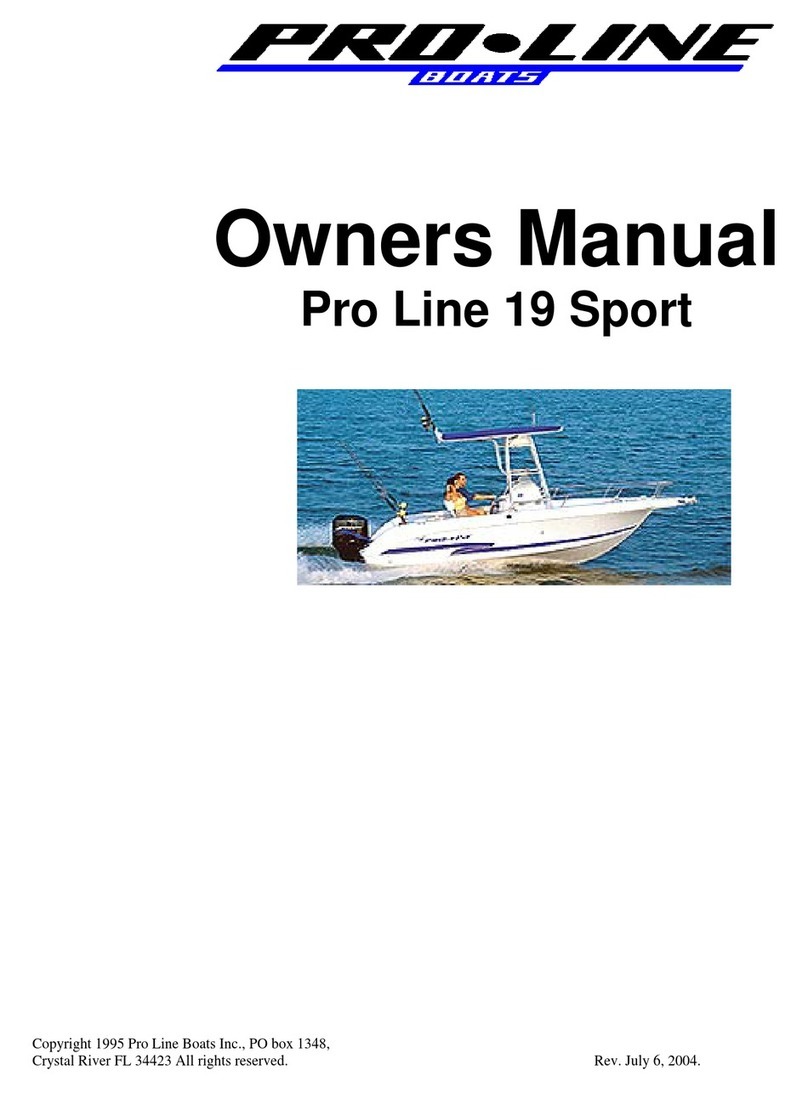
Pro-Line Boats
Pro-Line Boats Pro Line 19 Sport 2004 owner's manual
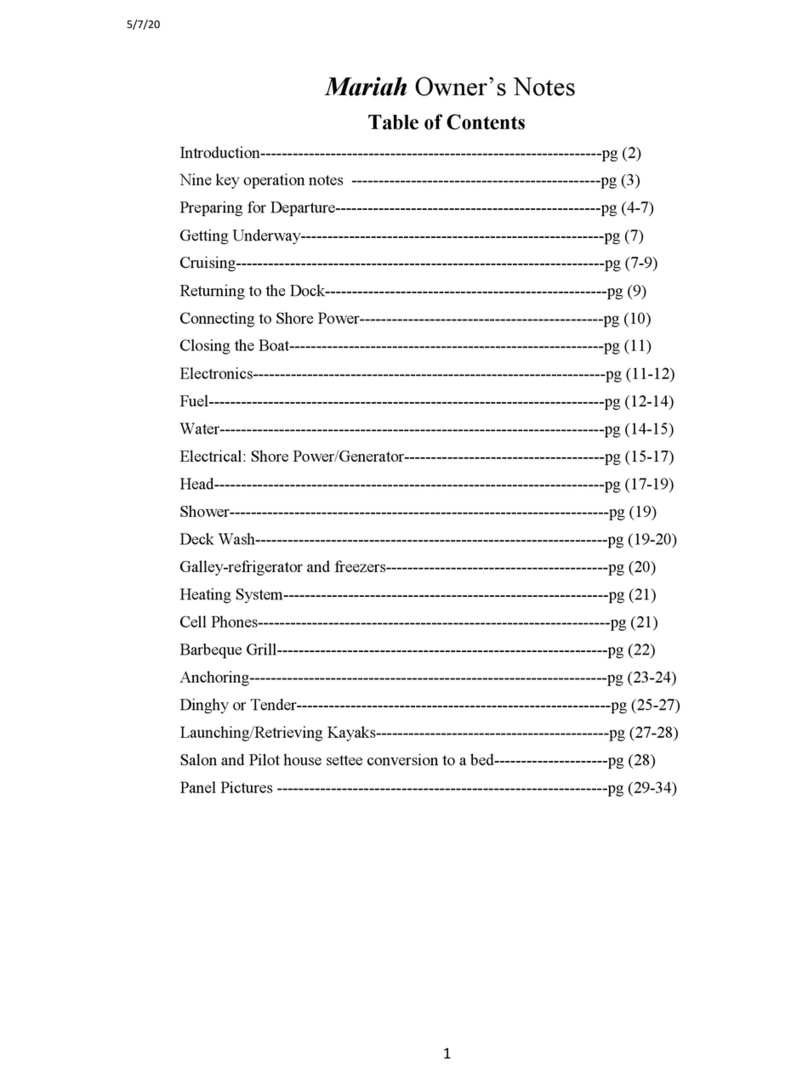
San Juan Yachting
San Juan Yachting Mariah Owners’ Notes

Bayliner
Bayliner 246 Discovery Owner's manual supplement
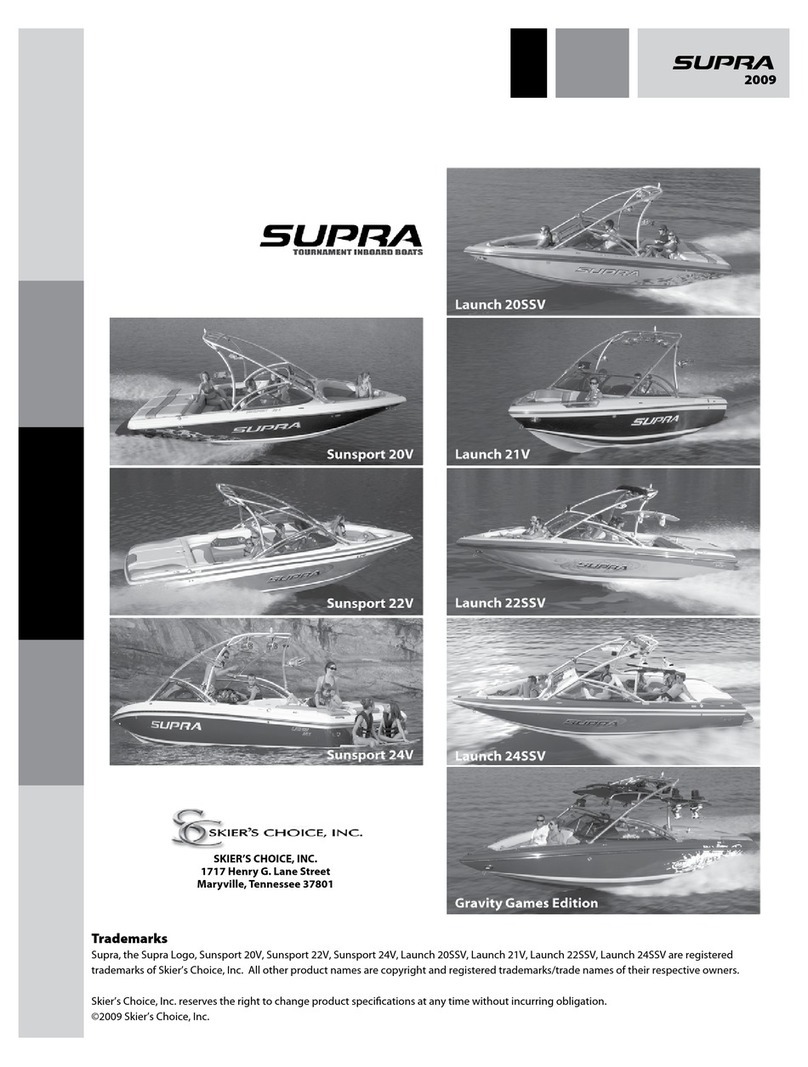
Skier's Choice
Skier's Choice Supra 2014 instruction manual
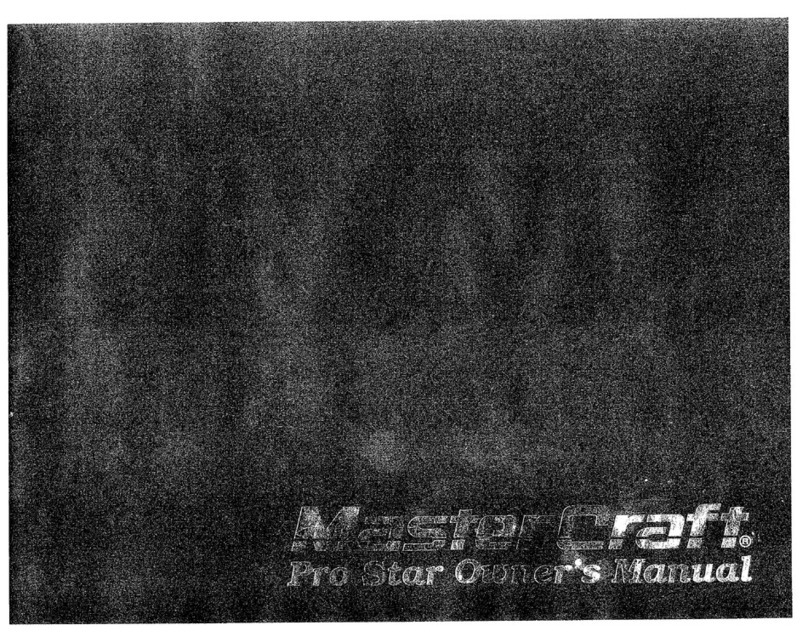
MasterCraft
MasterCraft Pro Star owner's manual






